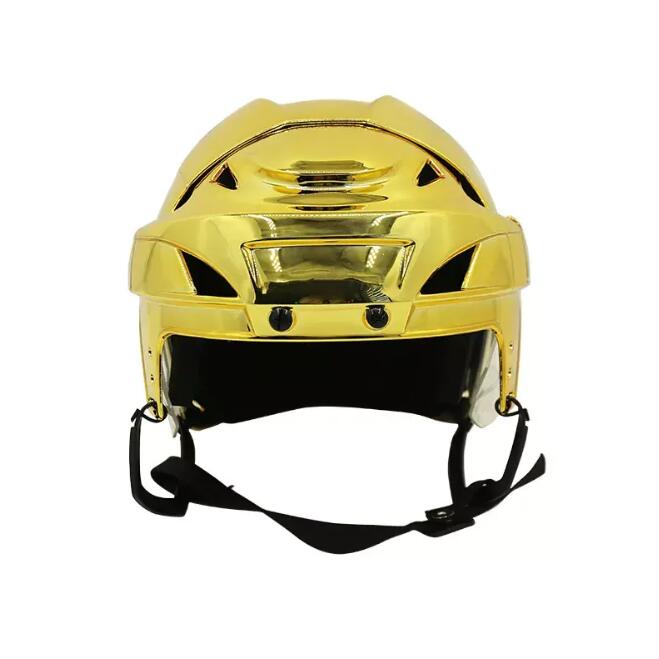Navigating Regulations: Understanding Requirements for Hockey Player Helmets with Electrolytic Gold Colors or Visibility Features
2024-03-25
Introduction:
As technology advances, innovations in sports equipment, such as hockey player helmets with electrolytic gold coatings, offer new possibilities for safety and performance. However, with these advancements come questions about regulations and guidelines regarding helmet colors and visibility features. In this article, we'll explore whether there are any specific regulations governing the colors or visibility features of hockey player helmets with electrolytic gold coatings and their implications for players and teams.
Understanding Electrolytic Gold Coatings in Helmets:
Electrolytic gold coatings have gained attention for their potential to enhance the durability and performance of hockey player helmets. These coatings may offer benefits such as improved impact absorption and corrosion resistance, contributing to player safety on the ice. However, the use of electrolytic gold coatings raises questions about their appearance and visibility, particularly in the context of regulations and guidelines set forth by governing bodies.
Regulations Regarding Helmet Colors:
In many sports, including hockey, governing bodies establish regulations regarding the colors of player equipment, including helmets. These regulations are primarily aimed at ensuring uniformity and visibility on the field of play. While specific rules regarding helmet colors may vary between leagues and competitions, common guidelines typically require helmets to be a solid, contrasting color to the team's uniform and easily distinguishable from those of opposing teams.
Implications for Helmets with Electrolytic Gold Coatings:
The introduction of helmets with electrolytic gold coatings poses unique challenges in terms of compliance with existing regulations regarding helmet colors. Unlike traditional helmets, which are typically made of solid-colored materials, helmets with electrolytic gold coatings may feature metallic or reflective surfaces that deviate from conventional color standards. This raises questions about whether such helmets meet visibility requirements and ensure adequate contrast with team uniforms and opposing players.
Visibility Features and Safety Considerations:
In addition to color regulations, governing bodies may also impose requirements for visibility features on hockey player helmets to enhance player safety. These features may include reflective elements, high-visibility strips, or decals designed to improve the visibility of players on the ice, especially in low-light conditions or crowded environments. While electrolytic gold coatings themselves may not inherently provide visibility features, helmets can be customized with additional elements to enhance visibility while maintaining their aesthetic appeal.
Navigating Compliance and Safety:
As hockey player helmets with electrolytic gold coatings become more prevalent, players, teams, and equipment manufacturers must navigate compliance with existing regulations while prioritizing safety and performance. This may involve collaborating with governing bodies to establish guidelines specific to helmets with innovative coatings, ensuring that they meet visibility requirements without compromising their protective capabilities. Additionally, incorporating visibility features into helmet design and customization can further enhance player safety and visibility on the ice.
Conclusion:
Hockey player helmets with electrolytic gold coatings represent a promising advancement in sports equipment technology, offering potential benefits for player safety and performance. However, navigating regulations regarding helmet colors and visibility features presents challenges for players, teams, and governing bodies. By addressing these challenges through collaboration, innovation, and adherence to safety standards, stakeholders can ensure that helmets with electrolytic gold coatings meet regulatory requirements while providing effective protection and visibility for players on the ice.



